Introduction
Symphonium Audio is a company based in Singapore and they specialize in in-ear monitors (IEMs). I would like to thank Symphonium Audio for the review unit of the Aurora. At the moment, you can purchase the Aurora on their official website, Symphonium Audio or Music Sanctuary . For more information, you can visit their official Facebook page, Facebook .

Specifications
- Driver Configuration: 2 Balanced Armature
- Frequency Response: 10Hz – 19kHz
- Sensitivity: 109dB
- Impedance: 75Ω
Unboxing & Accessories
The Aurora comes in a black package with a black protective cover. On the cover, there is the brand logo and name. The black package sports the logo. After opening the package, there is a circular carrying case which contains the Aurora, detachable 2 pins 0.78mm cable and cable wrap. The soft pouch sports the brand logo and it contains the warranty card, comply tips and silicon tips. There is an instruction manual.
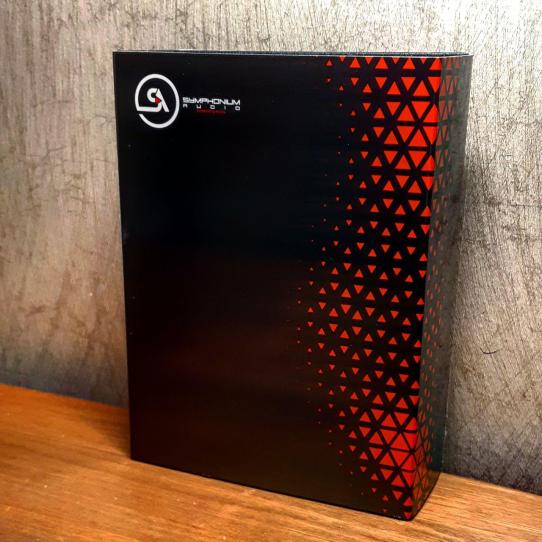
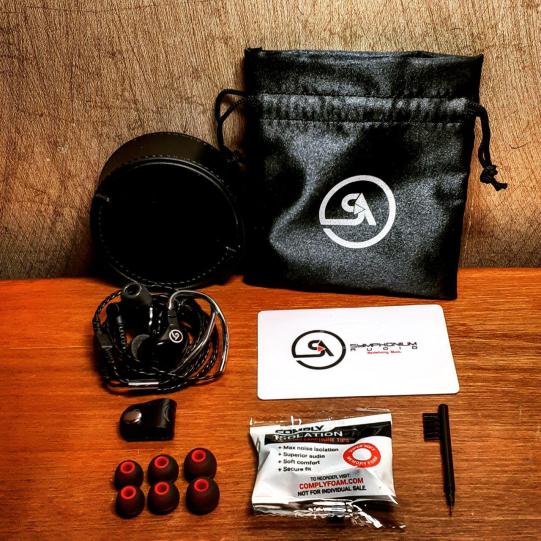
IEM Build & Design
The Aurora uses acrylic shells and there is a smooth surface. On both faceplates, the brand logo is printed. The shells are black in color. The nozzle is slightly angled without metal mesh. On the inside of each 2 pins socket, there is a L and R marking to differentiate left and right respectively. The Aurora has an ergonomic design with a comfortable fit.

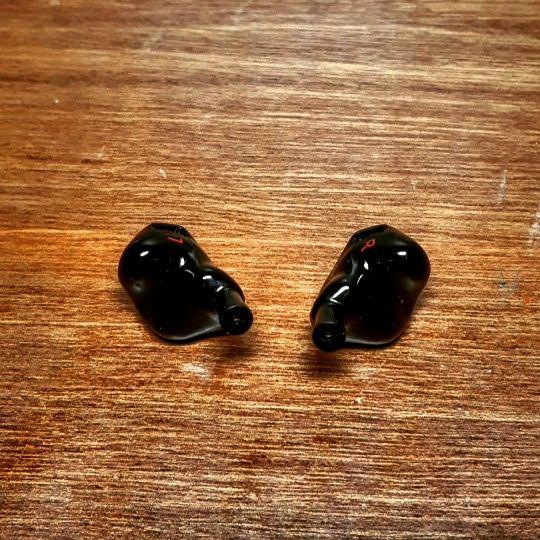

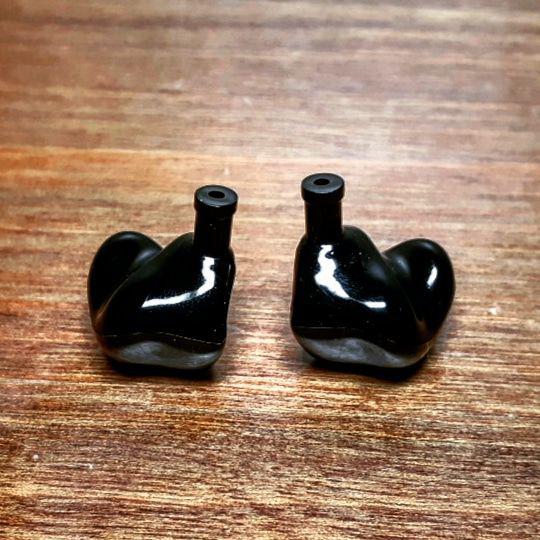
Cable Build & Design
The cable is a detachable 4 core cable with 2 pins 0.78mm connectors. On the connectors, there are blue and red dot on the left and right side respectively so users can differentiate. The connectors have a transparent housing. The cable has a memory wire section that is enclosed in a transparent heat shrink tube. It is not very flexible due to the metal inside that helps to form the shape. The memory wire section is rather short. The chin slider is made up of a transparent tube and the y splitter is made up of a soft rubber material with strain relief. The jack is 3.5mm gold plated right angled with strain relief.

Sound Analysis
Lows
The Aurora has moderate sub-bass quantity and it is extended well. The sub-bass reproduction is not very authoritative and the rumble is quick which provides the necessary engagement. Each bass note is articulated with precision and there is a speedy attack. Bass decay is pacey and creates a lively feeling. The bass texture is rendered in a smooth manner. The mid-bass has little quantity and the slam does not have a weighted feeling. It is controlled and the impact is not very strong. There is still sufficient engagement for the bass reproduction.
Mids
The midrange has a good balance. The transparency is at a moderate level and the details retrieval is fair. There is a clean rendition. The lower mids has a moderate amount of body which helps in the expression of male vocals. Although it is not very thick, there is no dry or hollow feeling. The upper mids is slightly boosted and the additional forwardness aids in the liveliness of female vocals. The intimacy level is moderate with a constant engagement which leads to a fatigue-free listening. The finesse shown is great and it helps to prevent vocals from sounding shouty. The midrange takes on a light approach whilst still maintaining the allure.
Highs
The treble has moderate extension with slight brightness. There is no sibilance and harshness. The Aurora showcases a good technical aspect and it is able to render a good amount of air. The airy feeling complements vocals well. The crisp is nice and sparkle is lacking a little. The engagement is apparent but it is not fatiguing. There is an excellent balance for the treble presentation. With combination of body and definition, it is able to provide a relaxing listen whilst delivering an engaging experience.
Soundstage
The soundstage expands naturally and the width magnitude has a moderate level. It is able to provide a open feeling which leads to minimal congestion. The depth is not very closed in and there is sufficient space. Positioning of vocals and instruments is rather precise.
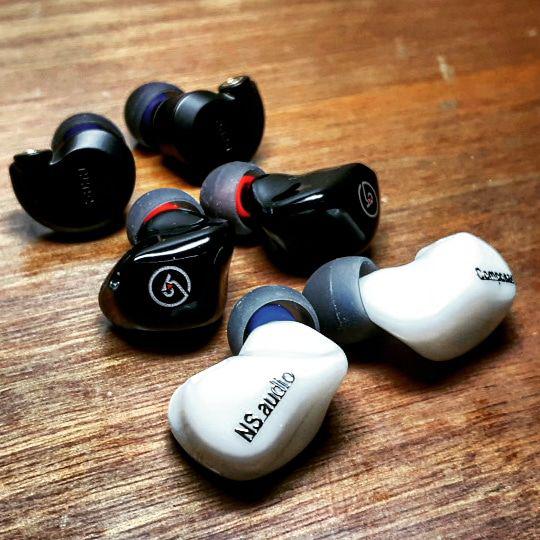
Comparisons
Symphonium Aurora vs NS-2 Composer
The Aurora has slightly more sub-bass quantity than the Composer and the sub-bass extension is greater. There is better depth. The Aurora is able to give out a greater impact. The bass decay on the Aurora is faster and the agility helps in the overall engagement level. Bass texture on the Composer is rendered with additional smoothness. The mid-bass of the Composer has more quantity than the Aurora which contributes to the slam. The bass reproduction on the Composer takes on a fuller approach. The Aurora has a higher level of transparency while the Composer has extra lushness. The lower mids on the Composer has more quantity than the Aurora and male vocals benefit from it. Emotions are conveyed effectively. The upper mids on the Aurora has more forwardness which helps to express female vocals in an intimate manner. The Aurora has a brighter midrange than the Composer that aids in the overall liveliness while the Composer showcases a soothing listen. The treble on the Aurora has more extension than the Composer and it is able to rendered a greater amount of air. Crisp is more apparent on the Aurora with a slight sparkle. The Composer takes on a different approach with additional body and the smoothness creates a relaxing listen. There is no sibilance and harshness on both. Lastly, the Composer has a more natural expansion. The width magnitude on the Aurora is greater while the Composer offers slightly extra depth.
Symphonium Aurora vs Dunu Falcon-C
The Falcon-C has more sub-bass quantity than the Aurora and the rumble is expressed naturally. The Aurora has a slightly greater extension than the Falcon-C. The sub-bass reproduction is more engaging on the Falcon-C. The bass definition is sharper on the Falcon-C. The bass texture is rendered more smoothly on Falcon-C while the bass decay on the Aurora has slightly greater speed. The agility helps to elevate the overall engagement level. The mid-bass on the Falcon-C has more body and it is able to execute slam with a stronger hit. Each bass note on the Falcon-C with a nice impact. The midrange on the Aurora is cleaner and the transparency level is higher. The lower mids on the Falcon-C has more quantity and it is more capable to tackle male vocals. The upper mids on the Aurora has extra forwardness and female vocals are presented with more intimacy. It is able to engage the listener well. Next, in the treble section, the Aurora has greater extension while the Falcon-C has more body. The crisp is more apparent on the Aurora. The Falcon-C has sparkle which injects excitement into the sound. Lastly, for the soundstage, the Falcon-C is able to expand in a natural manner. The width magnitude is greater on the Aurora and Falcon-C is able to render more depth.
Symphonium Aurora vs FLC8D (Gold Filter)
The FLC8D has more sub-bass quantity than the Aurora and the extension on the FLC8D is slightly greater. The rumble on the FLC8D is expressed naturally and it gives a captivating listen. The sub-bass reproduction has a higher engagement level on the FLC8D. The bass decay on the Aurora is slightly quicker than the FLC8D and the agility contributes to the impact. Bass texture on the FLC8D is rendered more smoothly. The mid-bass of the FLC8D has extra body and the slam is delivered with a weighted feeling. It is satisfying to listen to. Each bass note on both is articulated with a clean hit. FLC8D has more warmth and the bass performance is fuller. The midrange on the Aurora is rendered with more control while the FLC8D is able to give a lively presentation. Details retrieval on the Aurora is slightly better. The lower mids on the Aurora has slightly extra body than the FLC8D and male vocals are conveyed well without sounding hollow. The upper mids on the FLC8D is noticeably more forward and it aids in the presentation of female vocals. Next, the treble on the FLC8D is extended better with crisp while the Aurora showcases more finesse. There is no sibilance and harshness. There is slightly more air on the FLC8D. Treble body on the Aurora is more. In terms of soundstage, the Aurora has a more natural expansion and the width magnitude is similar. The depth on the Aurora is slightly better.
Conclusion
The Aurora is an energetic sounding iem which has an agile bass performance and crisp treble expression. It is able to captivate listeners with a strong engagement. There is a quick attack and the finesse shown is great. In addition, the Aurora has a nice ergonomic design and it fits comfortably. The Symphonium Aurora is an impressive debut iem.



